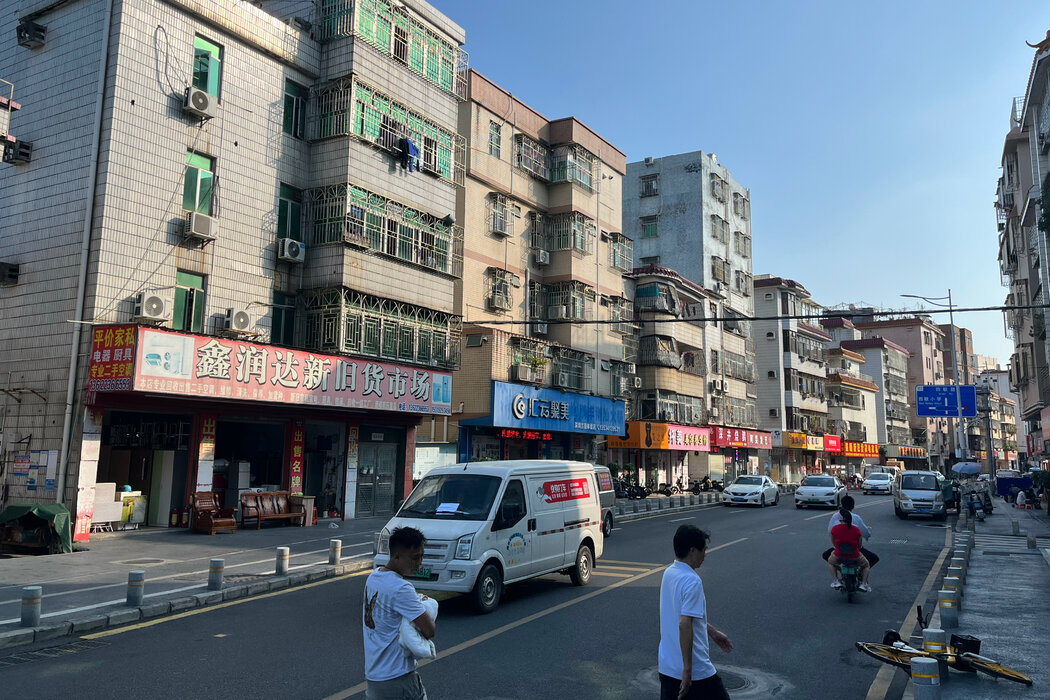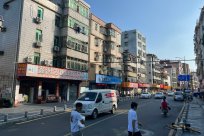
In Shenzhen, a metropolis created by China's economic prosperity, the list of villages is reminiscent of this city's simple past and the challenges facing the real estate industry in China.
The list of villages is the so -called city village in China. It consists of a low apartment building and a small couple shop. It is connected by the alleys and narrow roads, just like a maze.Such a city village is hundreds of in Shenzhen adjacent to Hong Kong and has a population of 18 million, and has reached thousands of thousands of people throughout China.
Nowadays, as China has fallen into an incredible real estate crisis, policy makers hope to transform an aging urban community like the village to start construction to stimulate the local economy.
However, the renovation of the list of villages fell into stagnation, which indicates that this is not a fast or simple solution.
Seven years ago, the list of villages was selected by officials in the city for "urban renewal". In 2019, China Evergrande, one of China's largest real estate companies, took over the project.The company paid the owner's demolition fee and began to clean up the land and build a modern high -rise building.But before the project started, the Evergrande Empire had collapsed.
Evergrande subsequently gave the project to Shenzhen Metro Real Estate Group Co., Ltd., which is a state -owned enterprise and the largest shareholder of Vanke, another large residential buildings.Today, Vanke is also facing cash.Last week, Shenzhen Metro MDASH; mdash; even the Shenzhen Municipal Government mdash; mdash; promised to provide support for Vanke to try to appease investors.
At the same time, the construction of the list of villages has been stagnant.On a recent working day, the modern building of a glass curtain wall as the project headquarters is basically empty, and the Evergrande logo is still hung on it.
Evergrande reached an agreement with the owner to demolish their old house and build a new house. Opposite is a updated and more prosperous community.Keith Bradsher/The New York Times
Several of China's largest residential real estate developers are in a financial turmoil. After many years of excessive expansion, they have encountered slow sales and limited lending.Last month, the average price of new houses has been the largest decline in more than eight years.The downturn in the real estate market is dragging the economy.Local governments relying on land rental income felt the pressure.
The government tries to reduce interest rates and relax the conditions of house purchase, but it is not supplemented.In the case that debt has become a problem, more severe measures may put pressure on local budgets.The financial regulatory agency is discussing methods to support developers, but they are worried that this will induce real estate companies to regain adventure behaviors that trigger crises.
Because of this, Chinese leaders set their sights on the villages in the city, the land owned by the communities in large cities.All urban land in China is owned by the country.As part of the national urbanization process, the government expands the size of the city by absorbing the surrounding farmland owned by villagers.
However, the village is allowed to retain the collective ownership of the villagers' residence, thereby forming small pieces of land that the country cannot touch.With the modernization of Chinese cities, high -rise buildings, and street grids, the villages in the city have gradually developed into a densely populated chaotic community. The scholars around them have nothing to do with them.
Starting around 2009, as the urban expansion began to exhaust the land, many local governments realized that the villages in the city have the potential to be developed and re -developed these communities.But before this year, this was mainly a local move.
In April of this year, the Politburo of the Communist Party's administrative decision -making agency said that it will "actively steadily promote the transformation of the city in the city of 21 largest cities across the country.According to the official news agency Xinhua News Agency, in July of this year, the Chinese State Council claimed that the policy was the "important measure" of "expanding domestic demand".
"This does show that Chinese leaders are anxious about finding new pipelines for urban growth," said Zhang Yan, an associate professor of political science at the University of Elino, Zhang Yan, a associate professor of political science at the University of Elino.
In the last major real estate recession around 2015, Beijing spent hundreds of billions of dollars to pay cash to residents and demolished the shabby sheds of small towns.
Because Evergrande has encountered serious financial difficulties like many Chinese real estate developers, the reconstruction project of the community where the seafood market is located in the picture has stagnated.Keith Bradsher/The New York Times
The development of the city in the city is more complicated, and the cost may be equally high.
Nomura Securities pointed out in a report in October that the process was "challenging and cost -effective", and the progress was slow.According to a report in August, according to CITIC Securities estimates, China may invest nearly $ 140 billion in a full year.
The list of villages is located in northwest of Shenzhen and looks like many villages in the city.The rows of concrete apartment buildings are very close, commonly known as the "handshake building".These apartments are very broken: there are no elevators, there are railings on the windows, and squatting toilets.
The business on the street downstairs is very lively, including fruit and vegetable stalls, second -hand shops and small restaurants.There are print factories, warehouses and factories in the nearby industrial park.Among the 59,000 residents of the three villages in the villages and near the three cities, most people are migrant workers who come to Shenzhen from other places to find a job from other places.
These villages in the city are always known as the "place where dreams start."Chinese singer Chen Chu was born before he lived in the village of Shenzhen City, and went to the bar to perform at night.In a lyrical song about this experience he created, he sang: "The people there are very close, and the distance between the building and the building is just a gap."
In 1979, Shenzhen became China's first special economic zone, and a 300,000 fishing village became the center of Chinese capitalist experiments.Many most successful companies were born in Shenzhen, including Huawei, BYD and Tencent.
Shenzhen was one of the first capitalist pilot cities in China after Mao Zedong's death. Many old buildings were razed to the ground in the 1990s.Forrest Anderson/Getty Images
However, with the development of Shenzhen, migrant workers who still account for an important proportion of local labor have been squeezed out of the newly developed community of the city by expensive house prices.
The land of many villages in the city is owned, and the ownership of the house belongs to the villagers who have lived for a long time.Many villagers have moved away a long time ago.
Gao Jia (Yin) has been operating a second -hand appliance shop in the village for eight years.Last year, the landlord agreed to transfer the building where the shop was located to Evergrande, so he asked him to move away.Evergrande's accident led to the suspension of the renovation project, and the landlord could not complete the sale. He was glad to get the chance of breathing.
"Reform the old town has no benefits to us," Gao Jia said."We can't afford the rent, and it is impossible to do business anymore."
Duan Biqiong, the owner of a stationery store, said, "If there is no migrant worker, this place is an empty city."
In addition to the discounted price, the village in the city will also spend a lot of time.Before demolishing the house, the local government must negotiate with the collective ownership of the land and the individual owner of the house.
According to local media reports, Guangzhou, China's third largest city, will carry out 127 urban village reconstruction projects this year. The city officials said that the average cycle of the completion of a project ranges from 5.5 to 7 years.The longer the cycle, the higher the cost.
44 -year -old Jack Middot; Zhuang (Yin) has a five -story apartment in the village.When he was a teenager, he moved here for the first time with his family, and he was basically deserted around.Go to the nearest bus station for 30 minutes.Today, the list of villages has been connected to the subway.
But Jack Middot; Zhuang couldn't live here.This year, he moved his wife and children to Chengdu nearly 2,000 kilometers away.He said that there are no parks near the village, and the child is not safe to live here, because the house is too close to the roadEssence
"Except for the cheap rent, there should be no other particularly good," said Jack Middot; Zhuang said."It's not an ideal environment for life."
Although he decided to start a new life, he was not sure if the sales agreement signed with Evergrande in 2020 was still valid, and he did not know if he needed to negotiate with the new developer again.He hopes to replace this building with a new unit room.
Right now, only all he can do is to wait.



